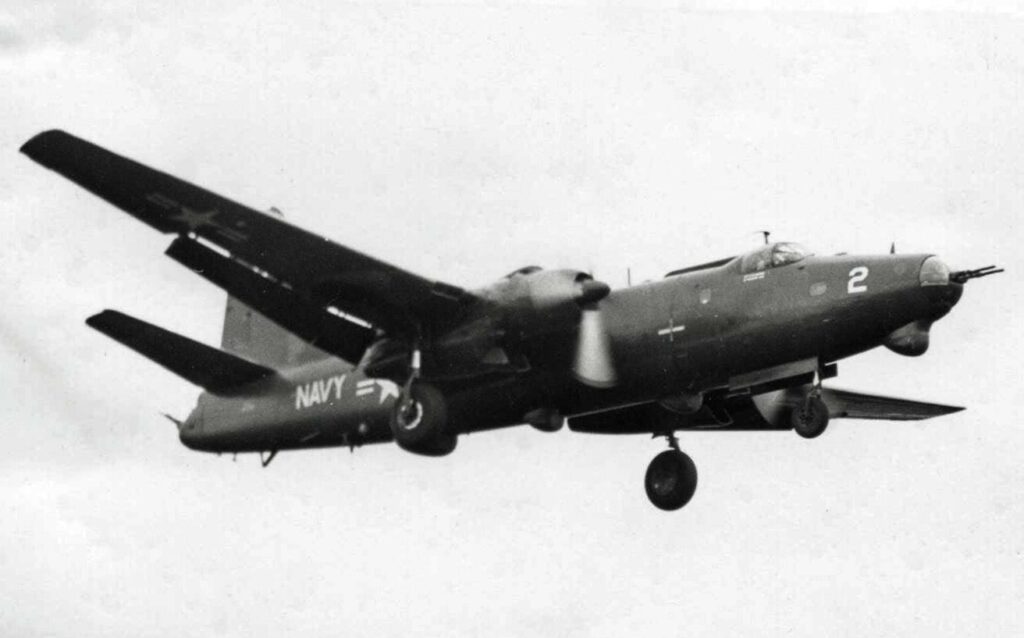The Martin P4M Mercator was a U.S. Navy patrol bomber, notable for its mixed propulsion with piston and jet engines, used in the 1950s.
In brief
The Martin P4M Mercator, a product of the 1950s, served as a long-range patrol bomber for the U.S. Navy. Unique for its era, it combined piston and jet engines in a mixed propulsion system. This aircraft was designed primarily for maritime reconnaissance, electronic surveillance, and anti-submarine warfare. The P4M Mercator was distinctive in its role as a multi-mission platform, equipped with advanced electronics for intelligence gathering. However, its service life was relatively short, primarily due to advancements in jet technology and strategic shifts in military aviation. It was one of the last piston-engine patrol bombers used by the U.S. Navy, marking a transitional phase in naval aviation history.
The Martin P4M Mercator holds a unique place in the annals of military aviation, blending old and new propulsion technology in an era of rapid advancement.
History of the Development of the Martin P4M Mercator
In the post-World War II era, the U.S. Navy faced evolving strategic challenges, particularly in the realm of long-range maritime reconnaissance and anti-submarine warfare. The emergence of nuclear-powered submarines and the Cold War tensions necessitated the development of an advanced patrol bomber capable of extended missions over vast oceanic areas.
Responding to this need, the Martin Company initiated the P4M Mercator program. The goal was to create an aircraft that could perform long-range, high-endurance maritime patrols, equipped with the latest in electronic warfare and reconnaissance capabilities. The Navy sought a versatile platform that could engage submarines, gather intelligence, and provide a strong deterrent in both the Atlantic and Pacific theaters.
The P4M Mercator first flew on November 20, 1946. It was a unique aircraft in the Navy’s inventory, and as such, it did not receive a NATO nickname like many of its contemporaries.
Design of the Martin P4M Mercator
The design of the P4M Mercator was a blend of traditional and modern technology. Its most distinguishing feature was its mixed propulsion system, which combined two Pratt & Whitney R-4360 Wasp Major radial piston engines and two Allison J33 turbojet engines. The piston engines were mounted on the wings, while the jet engines were housed in underwing pods.
The aircraft measured about 25 meters (82 feet) in length with a wingspan of approximately 36 meters (118 feet). It could carry a crew of up to nine, depending on the mission. The P4M’s airframe design was optimized for long-duration flights, with a large fuel capacity and efficient aerodynamics.
One advantage of the mixed propulsion system was the ability to use the jet engines for extra thrust during takeoff or high-speed dashes, while relying on the more fuel-efficient piston engines for cruising. However, this configuration also brought drawbacks, such as increased maintenance complexity and operational costs.

Performance of the Martin P4M Mercator
The Martin P4M Mercator’s performance reflected its dual-engine design. The combined power of its piston and jet engines allowed for a maximum speed of around 470 km/h (292 mph), which was competitive for patrol bombers of the time. Its range was one of its most impressive features, capable of missions exceeding 4,000 kilometers (2,485 miles) without refueling.
When compared to contemporaries like the Lockheed P-2 Neptune, the P4M Mercator offered superior range and a unique mixed propulsion system. However, it was less versatile than some of its purely jet-powered successors, such as the Lockheed P-3 Orion.
Variants of the Martin P4M Mercator
The P4M Mercator had two main variants: the P4M-1 and the P4M-1Q. The P4M-1 was the initial patrol bomber version, equipped with magnetic anomaly detectors and other anti-submarine warfare equipment. The P4M-1Q, on the other hand, was a specialized electronic intelligence (ELINT) variant, outfitted with advanced electronic surveillance equipment for signals intelligence missions.
Military Use and Combat of the Martin P4M Mercator
The P4M Mercator saw service primarily as a maritime patrol and electronic intelligence aircraft with the U.S. Navy. While it did not participate in major combat operations, its role in Cold War reconnaissance and surveillance missions was crucial. The aircraft’s advanced electronic equipment made it an effective platform for signal intelligence, particularly in monitoring Soviet naval and communication activities.
The Mercator was not sold to other countries and remained exclusively in U.S. service. Its operational use was relatively brief; the aircraft was retired in the late 1950s as jet technology and strategic requirements evolved. The P4M was effectively replaced by more modern and capable aircraft like the P-3 Orion.
The Martin P4M Mercator represents a unique chapter in the history of naval aviation, bridging the gap between piston-engine patrol bombers and the jet age. Its mixed propulsion system and electronic capabilities reflected the technological and strategic complexities of the Cold War era. Although its service life was short, the Mercator’s contributions to maritime reconnaissance and electronic intelligence during a critical period in U.S. military history are noteworthy.
Back to the Special Aircraft section.